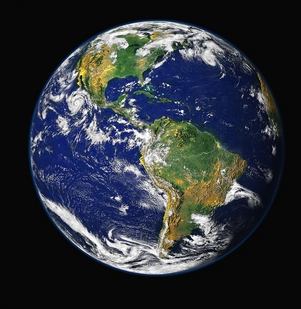
Geneva, Switzerland (BBN) - Scientists have demonstrated - yet again - the alarming effects of environmental change on the spread of infectious disease, shows a new study.
It’s the latest link in a long chain of research suggesting that deforestation and other land-use changes can be major drivers of everything from malaria to the Zika virus, which the World Health Organisation recently noted is a public health threat that’s “here to stay.”
Many previous studies have focused on how changes to the environment can create landscapes that are more suitable for disease-carrying organisms, like mosquitoes, or bring them into closer contact with humans, reports The Washington Post.
For instance, research suggests that deforestation in Malaysia has brought human communities closer to forest-dwelling macaques - and now, people in these communities are starting to come down with a form of malaria usually found only in monkeys.
And another study found that dams in South Africa, which can create standing water for mosquitoes to breed in, have caused a spike in malaria rates.
The new study, just out Wednesday in the journal Science Advances, takes a slightly different tack.
It focuses on the way land-use changes can alter an ecosystem’s food chain — and the disease-causing bacteria that lurk within it.
It finds that a certain amount of environmental degradation can actually be a boon for lower-level members of the food chain, who serve as the bacteria’s primary hosts.
The study focuses on a species of bacteria called Mycobacterium ulcerans, which is responsible for a skin disease known as the Buruli ulcer.
While treatable with antibiotics and sometimes even surgery, according to the World Health Organization, the painful ulcers caused by the disease can also lead to scarring and disfigurement.
It tends to be found in tropical and subtropical regions of Africa, South America and the Western Pacific. In 2014, 2,200 new cases were reported.
Until now, the bacteria’s life cycle has remained something of a mystery, said Aaron Morris, a research associate at Imperial College London and the new study’s lead author.
(Morris conducted the research while completing a PhD jointly funded by Bournemouth University and the French Research Institute for Development.)
Although scientists knew it was associated with aquatic environments, they didn’t know much about its hosts or how it spreads.
“We wanted to look at it at a community level and try to and figure out where it resides within the biological community,” Morris told The Washington Post. “So we wanted to see whether it was associated with specific species in the aquatic environment, pinpoint that, and see whether changes in land use, particularly human pressures on the environment, can affect this bacteria.”
The researchers collected more than 3,000 aquatic organisms, including fish, insects and other invertebrates, from 17 sites across French Guiana, one of the nations where Buruli ulcer is known to occur.
After testing the organisms for signs of the bacteria, they found that M. ulcerans is something of a generalist, meaning it doesn’t associate itself with just one species.
But they did find that it tends to be most abundant in organisms lower down on the food chain, such as small bottom-feeding fish and insects.
At each site, the researchers also evaluated the amount of deforestation or other human-induced habitat degradation, such as agricultural or urban expansion, and examined the way it had affected the community of organisms — including the bacteria — in each case.
They found that a certain amount of degradation tended to cause a decline in larger predators and other organisms near the top of the food chain, lessening the pressure on the animals they would typically eat and allowing them to prosper.
Because these lower-level organisms are the preferred hosts for M. ulcerans, the bacteria were actually more abundant in these settings.
“There’s sort of this sweet spot where you get a lot of the organisms that carry the bacteria, but as you progress to large levels of habitat destruction, then they sort of decline again,” Morris said.
In other words, a certain amount of human activity can be a boon to the bacteria — but too much could cause enough damage to the environment that even the lower-level hosts start to die off.
Whether the same effects would hold true for other types of bacteria is unclear from this study, which only examined the one species.
But the research does indicate that looking at the complete community in any given habitat, rather than individual host species — and the way it changes with human influence — can provide important insights into the study of infectious diseases, especially those caused by parasites that can live on a variety of different hosts.
As The Post’s Chris Mooney reported earlier this year, some of the most worrying infectious diseases that have emerged in recent years, such as the Zika virus, were likely spurred by a variety of environmental changes driven by encroaching human communities.
Recognizing the many different ways human activity can change an ecosystem is a major step in figuring out how diseases like Zika or malaria might behave in the future.
The new study provides another facet to these investigations. As it demonstrates, deforestation and other human activity doesn’t just change the landscape — it alters the complex suite of interactions among all the organisms that live there, sometimes making room for new or previously suppressed species to emerge and thrive.
And this can lead to all kinds of unforeseen — and sometimes unwanted — consequences.
“With habitat destruction you lose organisms, but you also gain some,” Morris said. Whether the ones that emerge are harmful to humans is a question that is becoming increasingly important to investigate.
BBN/MS/ANS